Search Results

Lynn
My wife, Lynn Lancour, spent endless time and resources organizing a bicycle trip from San Diego to St. Augustine, approximately 3,000 miles, to raise funds and awareness for The Leukemia & Lymphoma Society (LLS).

Robert
I was diagnosed with stage 4 T-cell non-Hodgkin lymphoma (T-NHL) nearly 20 years ago in March of 2002. By the grace and power of God and modern medicine, I have been cancer-free for the last 20 years!

Aryanna
My daughter Aryanna was diagnosed with stage 2 non-Hodgkin lymphoma (NHL) when she was two years old. Her treatment lasted three months, and she is a survivor of five years. As a young mom, I had no idea that this could happen to us. It all started with random nights of vomiting and fever. There were quite a few series of events that led up to her diagnosis. As a two-year-old, you think she’s just sick because she’s in daycare. She would get random fevers at night and would vomit, but it wouldn’t last.

Ashton
Finding out Ashton was sick started as a bunch of nothing ― small headaches, fevers, dizzy spells ― but you would never know she was not well. She was working, going to school, and caring for her son. Then the lumps came. They first started in her neck and abdomen. She refused to slow down for care due to trying to be a super mom, but one day the pain in her neck was so severe she finally went to the hospital. We then learned she had non-Hodgkin lymphoma (NHL). Soon after, she had multiple surgeries and started her battle off fighting strong with chemo, but it didn’t slow down her spirit.
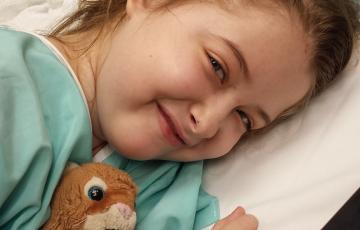
Anna
In 2016 I received one of the scariest calls. My 9-year-old niece had just been diagnosed with leukemia. I live on the opposite side of the country. I was by her side in under 12 hours where I spent the next month trading shifts with her mom as we watched her struggle through treatment. During her hospital stay, we learned of several children from our small community battling the same cancer. I began advocating for these kids and the situation grew bigger than we could have ever could have imagined. That story is for another time. I eventually had to come back home to Seattle.
Keaton
I was diagnosed with Hodgkin lymphoma (HL) in May of 2019. I first noticed something was wrong in January of that year when I noticed lumps in my neck. I shrugged it off, being in college at that time. I progressively got worse, getting sick nearly every day, sweating profusely at night, and losing weight quickly. The tipping point was when I got home from college after the spring semester. I had lost 50 pounds at that point, and my parents quickly took notice and forced me to go to the doctor.

Adriane
A day before my 29th birthday, I was diagnosed with Hodgkin’s lymphoma stage IV. No one expects a cancer diagnosis, especially when you’re young. It was a game changer for the rest of my life.
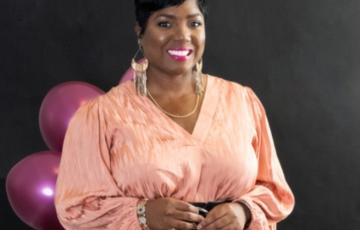
Mendya
First, I must express appreciation to The Leukemia & Lymphoma Society (LLS) for providing educational resources, knowledge, and financial assistance to those of us affected by blood cancer. LLS spotlights blood cancer and gives a voice to so many like myself. Thank you. As a way to show my support to LLS and to raise awareness, I have raised $210 in September 2023, Blood Cancer Awareness Month (BCAM), via Facebook. This is just the beginning of my advocacy.

Liv
When I was 25 years old, I started my new, dream job as a health and physical education teacher. Six days into the school year, I went for a CT scan after months of complications with my breathing. I got the results later that day while I was on my lunch break.
The doctors had found a 10.5 cm tumor sitting in my chest and just millimeters away from cutting off blood circulation to my brain. I was told to rush to the ER but not to panic. Well of course I panicked, and left work in shock. I went to Rhode Island Hospital and was immediately admitted.

Stephanie
I am 39 years old. At the age of 34 after having been very sick and misdiagnosed for over a year I was diagnosed at the Cleveland Clinic in May 2016 with Hodgkin's lymphoma.
At the point that I was diagnosed, it had advanced to stage 4B, which is the last stage of the disease. I have always had faith and relied on god but I can tell you I drew closer to him and relied on him in way I never had before when these disease came about.
Kimberly
When my husband, NFL linebacker Elijah, was diagnosed with multiple myeloma in 2005, shortly after retiring from the Oakland Raiders, we were stunned. Neither of us had ever heard of it.
Life with multiple myeloma became an instant roller coaster. As his caregiver I knew it was my job to learn as much as possible about what we were facing, while trying to keep things normal for our two young sons.

Michele
Michele decided she wanted to volunteer with The Leukemia and Lymphoma Society (LLS) because she herself and millions of others have been impacted by cancer. Both of Michele’s parents passed away from cancer and during that time, a lot of people were there for them. She knows how important that was for her and her family.
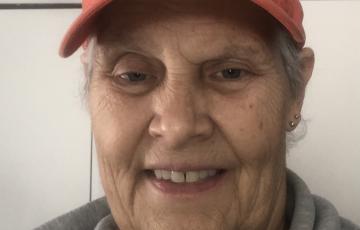
Pam
I was diagnosed with myelodysplastic syndrome (MDS) in December of 2020. I went through six treatments from January 2021 to June 2021. The treatments were a series of shots for seven days at the beginning of the month. In July 2021, I was approved for my stem cell transplant at The James Cancer Center, The Ohio State University in Columbus, Ohio. I had my stem cell transplant on July 29. I handled the stem cell transplant very well and was declared in complete remission from the months of September to November 2021.
Yvonne
I am 56 years old and a proud 16-year survivor of chronic myeloid leukemia (CML). The journey has been filled with struggles, instability, emotional ups and downs, coupled with chronic pain throughout the day and into the night. The things that have strengthened me the most are my faith in God, my family, dear friends, my church, and other survivors who gave me hope and extended themselves to me as advisers, also, prayer partners and sounding boards during moments of sheer frustration. I met the love of my life during my second year of chemo, something I thought could never happen!
Treatment Outcomes
The cure rates and survival outcomes for patients with ALL have improved over the past few decades. Today, nearly 90 percent of adults diagnosed with ALL achieve a complete remission, which means that leukemia cells can no longer be seen in the bone marrow with a microscope. Still, despite high remission rates, relapses still commonly occur in adults and survival rates for adult patients remain at approximately 20 to 40 percent. However, these rates can vary significantly, depending on the patient’s ALL subtype and other prognostic factors.
Signs and Symptoms
Many people are diagnosed with CLL even though they do not have any symptoms. The disease may be suspected because of abnormal results from blood tests that were ordered either as part of an annual physical or a medical examination for an unrelated condition. An unexplained elevated white blood cell (lymphocyte) count is the most common finding that leads a doctor to consider a CLL diagnosis.
Generally, CLL symptoms develop over time. As the disease progresses, a person may experience
Splenectomy
A splenectomy is the procedure done to remove the spleen. Before effective drugs became available for hairy cell leukemia, splenectomy was the first-line treatment for the disease.
Making Treatment Decisions
Adults living with blood cancer must make decisions about treatment, family, work or school and finances. If your child has been diagnosed, you must make similar decisions for your son or daughter.
Gathering Information and SupportYou'll need to choose:
Chemotherapy and Drug Therapy
Chemotherapy is generally used only in patients with blast-phase CML as a way to get the CML back into chronic phase. Very high-dose chemotherapy is used to prepares patients for an allogeneic stem cell transplantation.
Work, School & Finances
Work and SchoolSome people continue to work or attend school through cancer treatment, but others are not able to do so. Talk to your healthcare team to know what to expect from treatment so you can make the decision that is best for you.
Hospice
Hospice embodies a philosophy that delivers compassionate care to people, including children, who are approaching the end of their lives and provides emotional and physical support to them and their loved ones. Hospice offers medical care that focuses on maintaining and improving quality of life for someone whose disease or condition is unlikely to be cured. An interdisciplinary hospice team provides medical care, pain control and emotional and spiritual support that is tailored to the individual needs of each patient and his or her family.

Fiorella
In September 2017, I was diagnosed with stage 2 Hodgkin lymphoma (HL), which is cancer that starts in the lymphatic system. My oncologist went over my treatment protocol, which included six months of chemotherapy treatments with one of the side effects of that regimen being hair loss. I was set to start chemo the morning after Christmas.

Rebecca
On September 5, 2019, my world was forever flipped upside down. I heard the words, “This looks like signs and patterns of lymphoma cancer.” I froze at that moment and kept hearing the word cancer over and over again. Tears streamed down my face, and I remember everything else the ER doctor said was just gibberish to me. How could I have cancer? I’m a 26-year-old young adult who just gave birth to a healthy little boy. This could not be right.
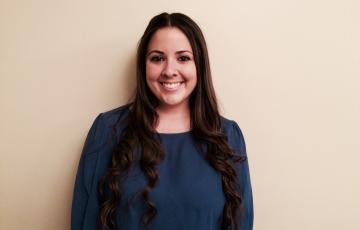
Marisa
Throughout my father’s journey, I was impressed by his care team, the advanced medicine used to treat blood cancer today, the individuals I met, people’s generosity, and the organizations I was introduced to. This journey opened my eyes to various organizations such as Be the Match and The Leukemia & Lymphoma Society (LLS).
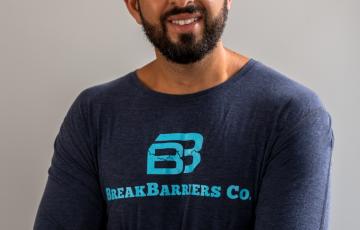
Bishoy
Born in Egypt, at the age of three, me and my family immigrated to the U.S. when I was diagnosed with acute lymphoblastic leukemia (ALL). I grew up in Long Island, New York, where I received treatment for 10 years. On my 13th birthday, I underwent brain surgery and remains cancer-free.